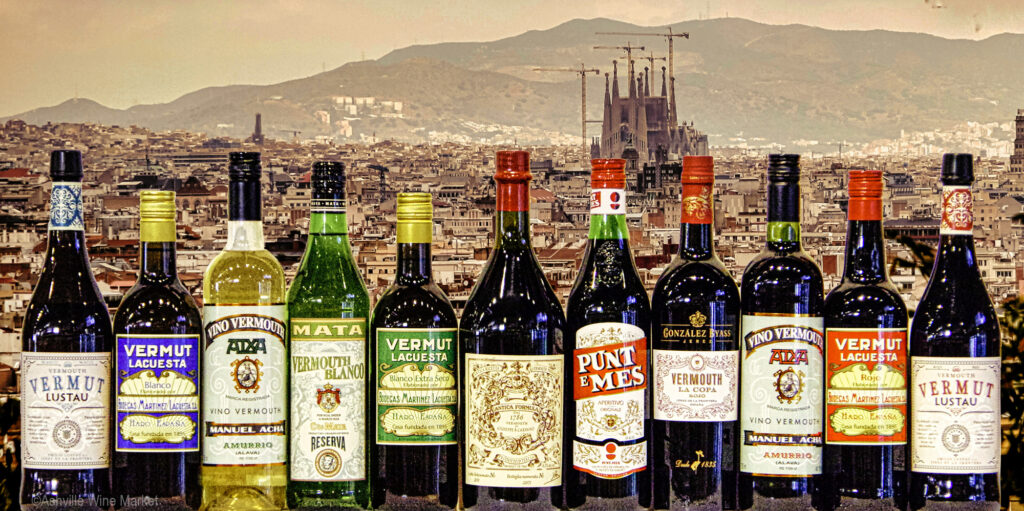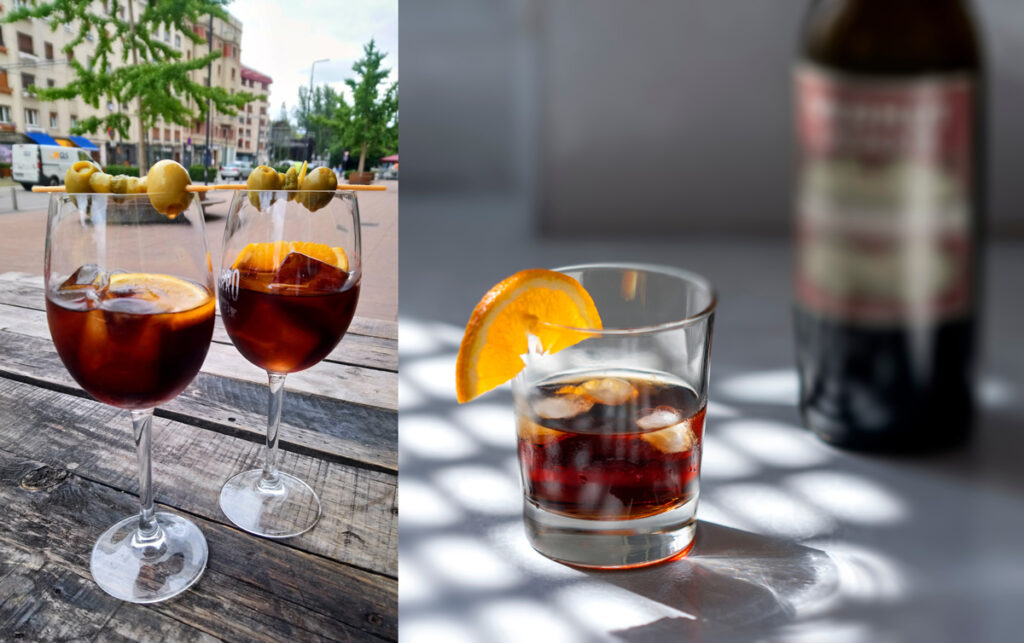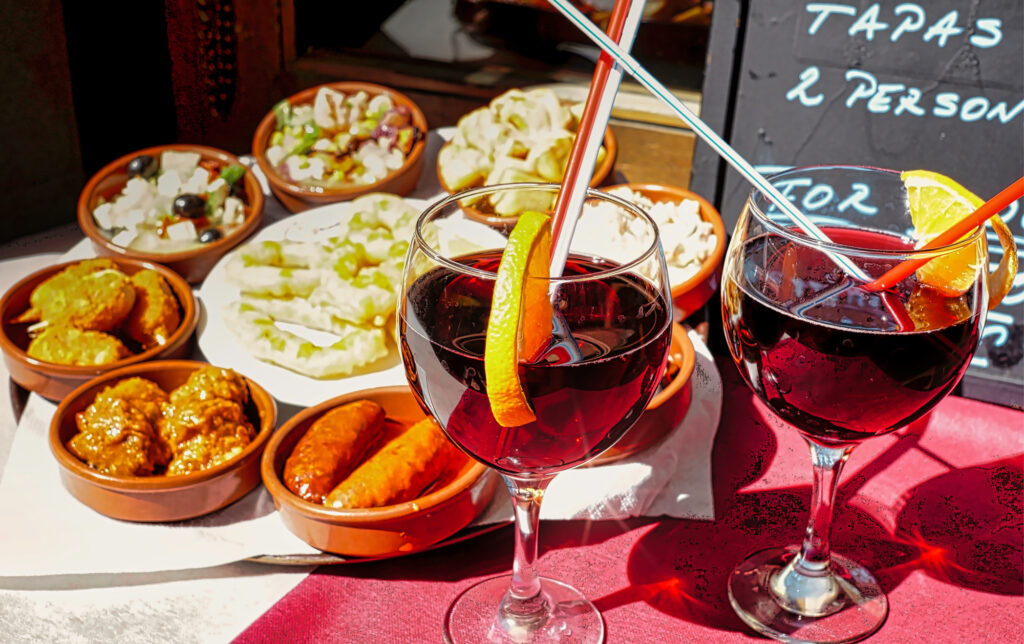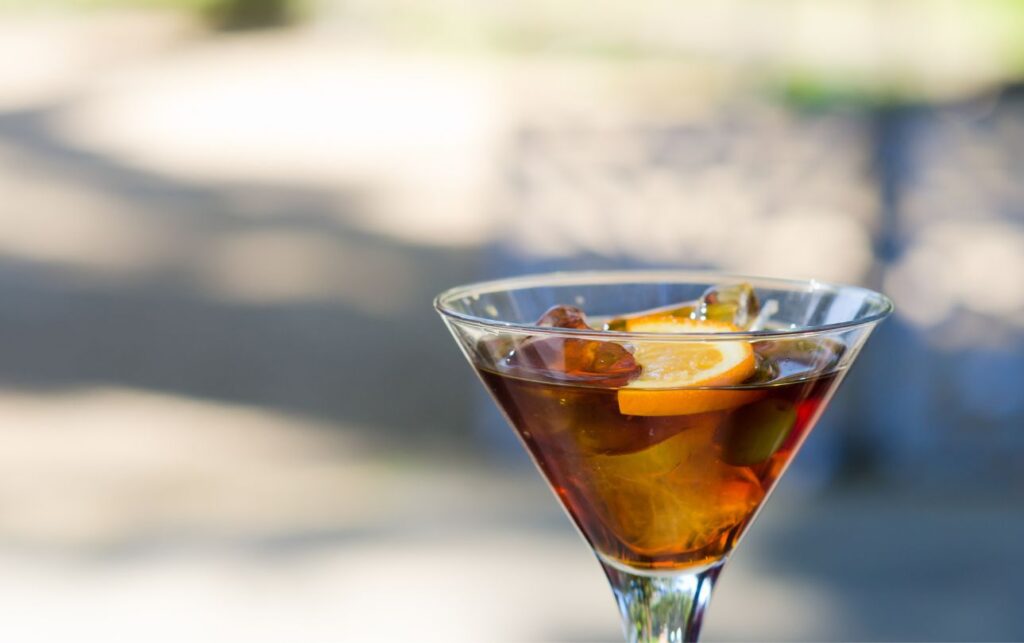
I adore Vermouth; however, during the first half of my adult life, I politely ignored the beverage, mainly regarding it as an ingredient of the cocktails consumed by my parents’ generation. My perspective began to change with my eye-opening Vermouth experience at the beginning of my career in professional kitchens. During those early years as a Chef, I discovered the joy of French pan sauces made with dry white Vermouth, and I was enormously enamored with the savory nuance it brought to fish and poultry dishes.
Fast forward some years later, during my first wine-buying trip to Spain, when I was introduced to the sweet-savory pleasure of Spanish Vermouth. Every restaurant and cantina visit began with a small glass of Vermouth on the rocks, garnished with an orange twist and olives. I would have never guessed that Vermouth could be so delicious and exciting on its own. This trip turned me into a lifelong Vermouth aficionado, and soon after, I began to explore Vermouth from Italy and France.
I’ve watched the popularity of Vermouth increase steadily in recent years, and with good reason — Vermouth is a super-versatile and delicious drink with a rich history and cultural significance. Wine lovers are discovering that Vermouth is much more than just a cocktail ingredient.

Vermouth is a fortified wine aromatized and flavored with various botanicals, including roots, barks, flowers, seeds, and herbs. It’s typically created by combining the botanicals with a base wine and then fortifying the blend with a neutral spirit, such as brandy or grappa. Styles can vary from bone dry to rich and sweet, and its alcohol content is usually significantly lower than Madeira, Port, and Sherry.
Vermouth has a long history, dating back to ancient Greece and Rome, where wine was flavored with herbs and spices for use as a medicinal tonic. The modern version of Vermouth can be traced back to 18th-century Turin, Italy, when Antonio Benedetto Carpano created sweet Vermouth flavored with Wormwood, one of the traditional botanicals used in Vermouth.
One of the most appealing aspects of well-made Vermouth is the gorgeous balance of sweet and bitter on the palate. This alluring push-pull of sweet and bitter comes from Wormwood, one of the many traditional botanicals used in Vermouth. Along with the other botanicals, it imparts a gentle bitter flavor to the beverage, while the sweetness of the base wine is the perfect counter-balance.
Vermouth is enjoyed in a wide variety of different styles throughout Europe. In Italy, the traditional style is sweet Vermouth, characterized by a rich, amber color and a sweetness balanced by savory notes. On the other hand, French Vermouth is typically drier and more herbaceous, with a lighter color. Spanish Vermouth is most often made using Sherry as the base wine resulting in a palate with broad, complex richness and distinctly nutty flavors.

Outside of classic cocktails like the Martini and Manhattan, what are the best ways to enjoy Vermouth? I defer to the Spanish — they’ve perfected the art of serving and enjoying Vermouth on its own, and the beverage is firmly rooted in their culture. Vermouth is the ultimate social drink in Spain, and it’s ever-present at any gathering with friends and family.
In Spain, Vermouth is most often served neat or on the rocks, as an aperitif, before a meal and with tapas. The glass is usually garnished with orange slices and olives, providing a complex melange of sweet, bitter, savory, and salty flavors.
Another popular way to enjoy Vermouth in Spain is to order it al de cava. The Vermouth is topped with a splash of cava, creating a light, effervescent cocktail. This is a common way to enjoy Vermouth in bars and taverns in the Catalonia region. Vermouth is also a key ingredient in some of the most famous Spanish cocktails, such as the Vermut de Grifo, a mix of Vermouth, soda, and a slice of orange or lemon.

Vermouth is the Swiss Army Knife of the wine world — there’s a style to fit every palate, and it’s a super-versatile beverage on its own as well as an essential cocktail ingredient. The possibilities are nearly limitless:
- Straight up — chilled or at room temperature and sipped neat, similar to a glass of wine
- On the rocks — served over ice and enjoyed as a refreshing drink
- Mixed — as a base for cocktails or a supporting ingredient in classics like the Martini, Manhattan, and Negroni
- Cooking — use dry white French Vermouth as a marinade or ingredient to add depth of flavor to dishes
- Vermouth Tasting — sipped and enjoyed like wine, also similar to how one would taste a fine whiskey or cognac
- Vermouth and tonic — A recent trend is to mix with tonic water and garnish with citrus.
